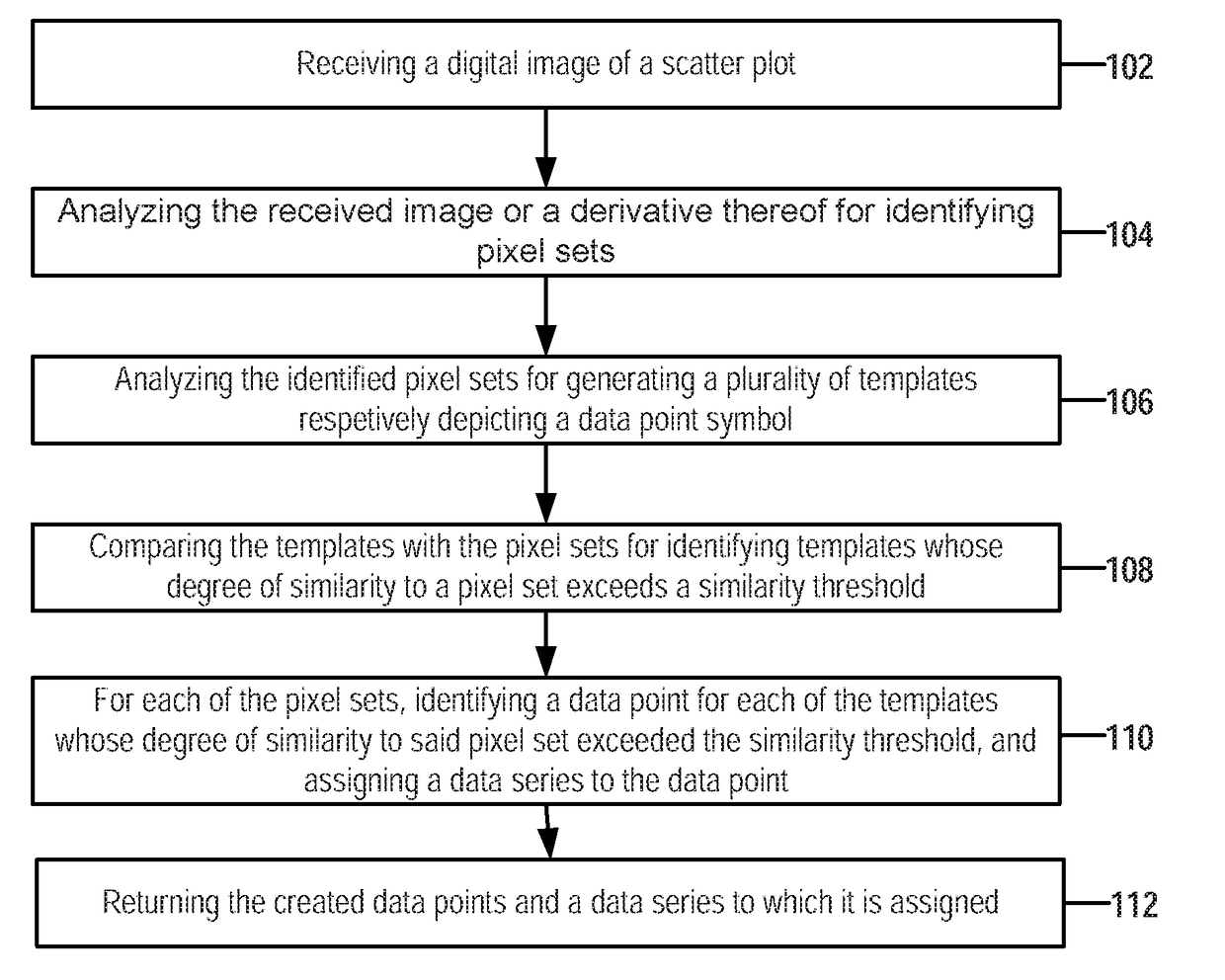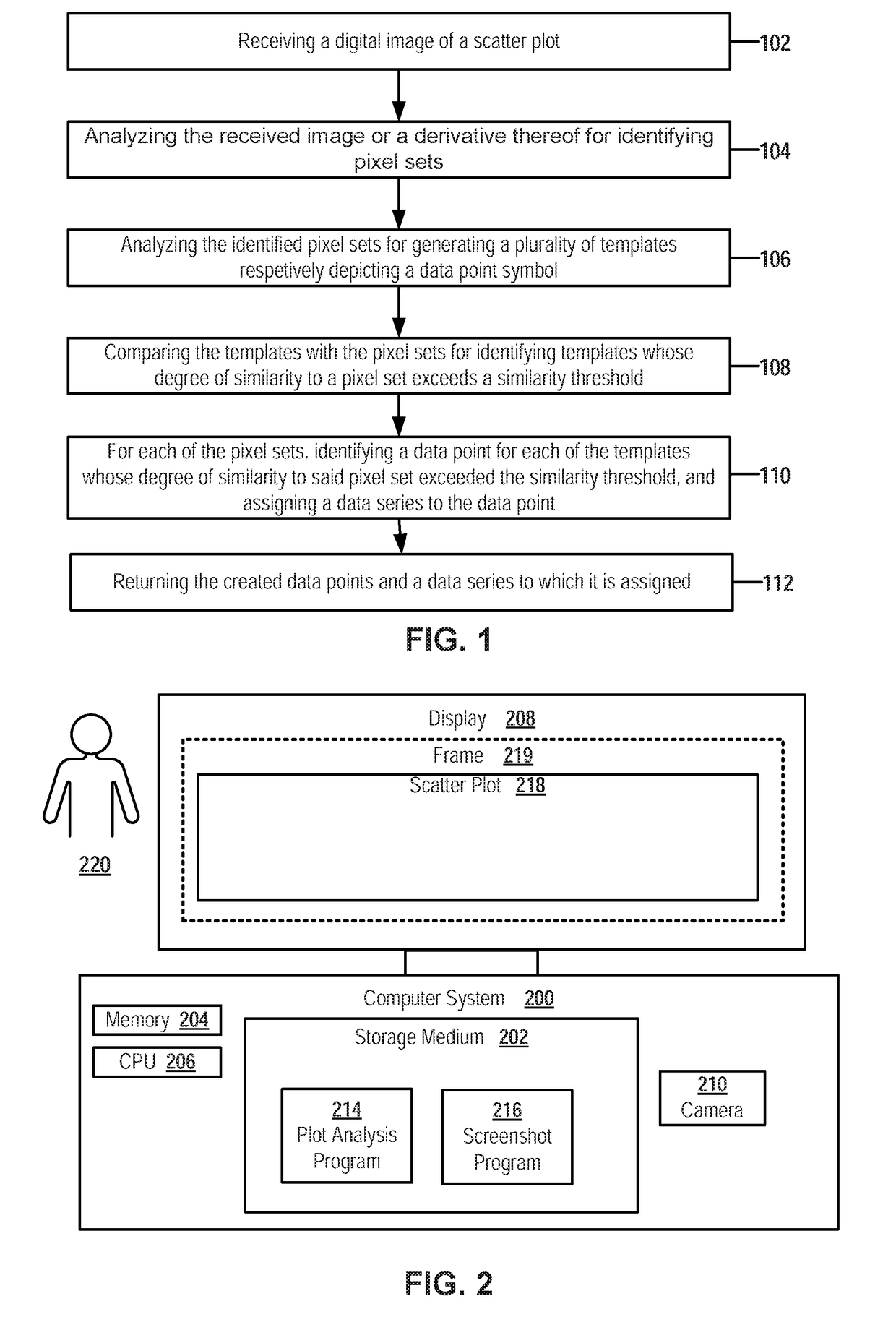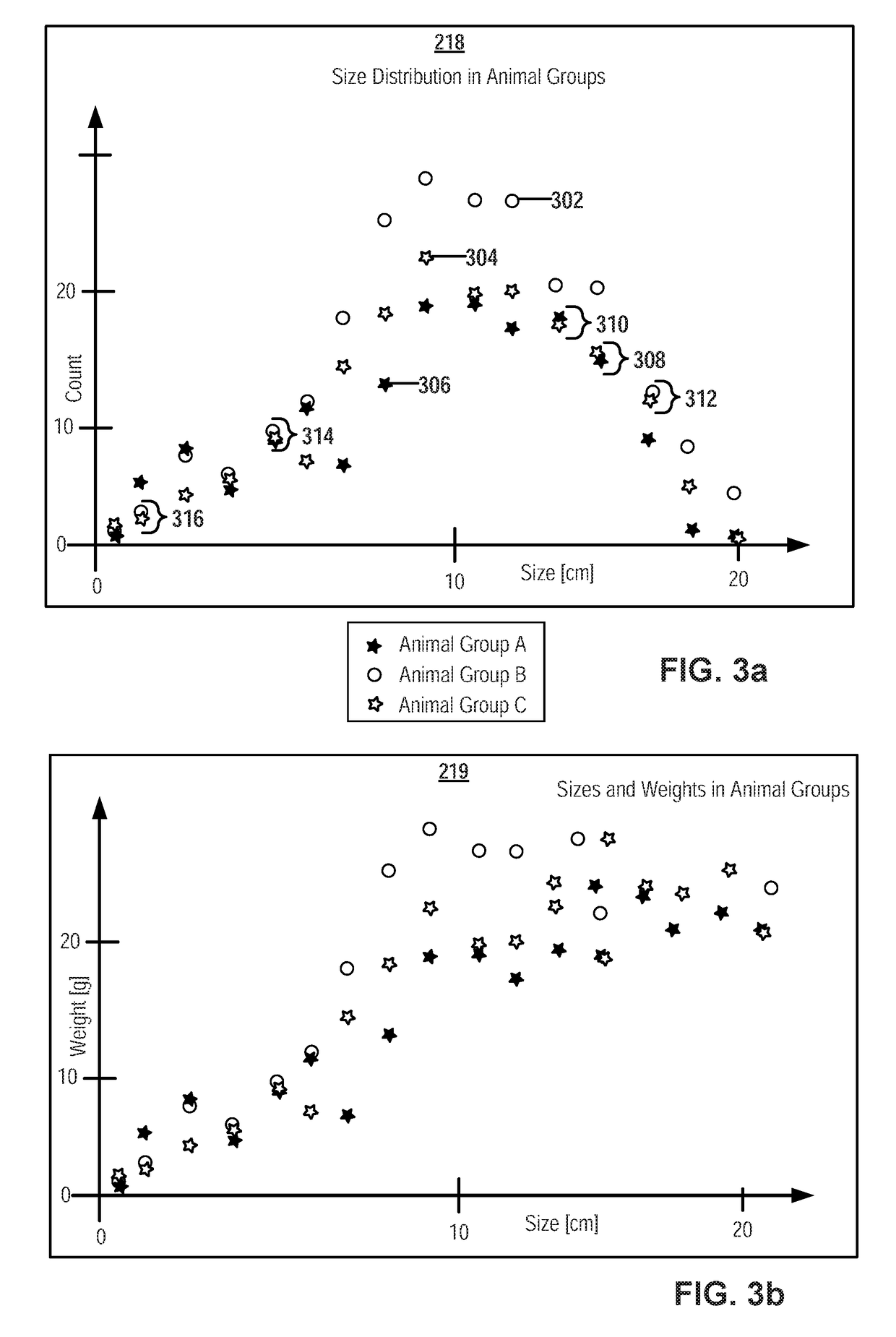Automated data extraction from scatter plot images
a data extraction and scatter plot technology, applied in image data processing, image enhancement, instruments, etc., can solve the problems of preventing a completely automated extraction of data from scatter, affecting the accuracy of data extraction, so as to achieve high accuracy the position of data points and increase performance.
- Summary
- Abstract
- Description
- Claims
- Application Information
AI Technical Summary
Benefits of technology
Problems solved by technology
Method used
Image
Examples
Embodiment Construction
[0149]A “plot” or “chart” as used herein is a graphical representation of data, e.g. of data points, belonging to one or more data series. A chart can be, in particular, a scatter plot.
[0150]The term “coloring” as used herein refers to the color, shading, and / or intensity gradient of one or more pixels. In combination with other visual features such as morphological features, size and / or shape, the coloring may be used for identifying multiple instances of the same data point symbol or for determining a template that matches completely or partially with a pixel set or an image patch.
[0151]A “pixel structure”, e.g. a template pixel structure, is a set of pixel that may have any shape. For example, a pixel structure can be a pixel matrix or a circle filled with pixels, a polygon or any other shape that is fully or partially filled with pixels.
[0152]A “chart image” or “plot image” as used herein is a digital image that depicts a chart. A plot image can be used as input for extracting d...
PUM
 Login to View More
Login to View More Abstract
Description
Claims
Application Information
 Login to View More
Login to View More - R&D
- Intellectual Property
- Life Sciences
- Materials
- Tech Scout
- Unparalleled Data Quality
- Higher Quality Content
- 60% Fewer Hallucinations
Browse by: Latest US Patents, China's latest patents, Technical Efficacy Thesaurus, Application Domain, Technology Topic, Popular Technical Reports.
© 2025 PatSnap. All rights reserved.Legal|Privacy policy|Modern Slavery Act Transparency Statement|Sitemap|About US| Contact US: help@patsnap.com



